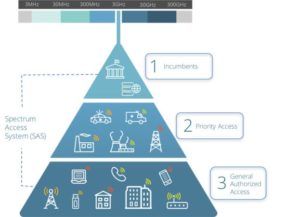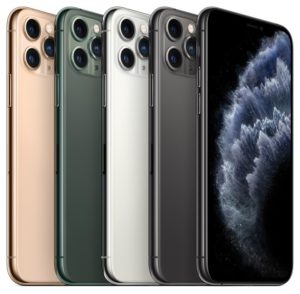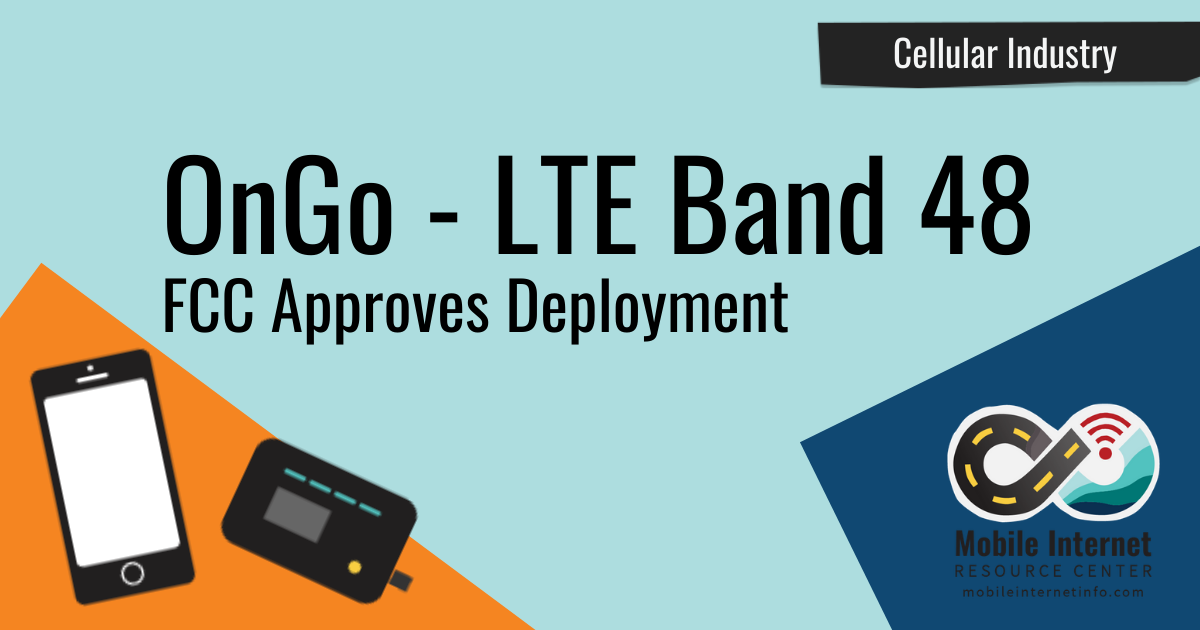Yesterday the FCC announced approval for the commercial deployment of wireless services on the 3.5GHz CBRS band - opening up 150MHz of new mid-band spectrum for LTE and 5G usage.
And if you have a recent flagship phone - you might already be compatible!

But CBRS (which will now be marketed as "OnGo") is unlike any other cellular spectrum authorized for use before.
Rather than dedicated channels being licensed to a single cellular carrier, much of the CBRS band is "shared" spectrum that opens the door for innovative new uses.
Multiple carriers will cooperatively share the CBRS airwaves (similar to how devices share Wi-Fi spectrum), and there is even the potential for private CBRS networks that use LTE technology but which do not rely on a commercial carrier at all.
It is still early days for CBRS / OnGo - but more cellular spectrum is always a good thing, opening the door for more speed and capacity as compatible devices and service rolls out.
Table of Contents
Video Version
Subscribe to our YouTube Channel
What Is CBRS?
The Citizens Broadband Radio Service (CBRS) is a chunk of 3.5GHz spectrum that the FCC has set aside for use for 4G/LTE cellular, 5G, and other innovative uses.
When used for LTE, CBRS is defined as LTE Band 48.
The catch with this 3.5GHz spectrum is that it is currently being used for military radar and satellite control signals - but not everywhere, and not all the time.
Think of this spectrum like a bowling ally - it might be booked on Saturdays for league games, but during the rest of the week anyone can bowl, first come first serve.
To deal with competing demands for this chunk us spectrum, the CBRS band is pioneering an innovative approach to sharing access to spectrum - with military radar and existing satellite operations grandfathered in with highest priority while in active use, then there is a second tier of Priority Access Licenses (PAL) that will be auctioned off to telecommunications companies for 5G and expanded LTE service.
Finally, there is a third tier of access that is open to any device without any license at all - similar to how Wi-Fi works. Devices operating at this level will have to be a good neighbor with other nearby devices, and they will need to clear out when higher priority users come along.
This negotiating will all happen automatically, behind the scenes.
CBRS compatible devices will be designed to check in with a central server to see if a channel in their area is already in use by a higher priority user, and if not they will be able to establish a communications link until someone else needs it.
The FCC's announcement today indicates that it is satisfied that this sharing system is working properly - and now companies can move ahead to deploy CBRS service, and the auction for second-tier licenses is moving ahead and is set to conclude in June 2020 to bring even more users to these airwaves.
And of course - the CBRS specifications are designed to allow for both 4G/LTE and 5G usage as well.
So What Is “OnGo” Then?
Over 150 companies and organizations came together to form the CBRS Alliance, and they spent years working out how this new frequency band could cooperatively be used.
Now that commercial service is authorized, the CBRS Alliance has announced the "OnGo" branding to indicate certified compatible devices, defining OnGo as:
"OnGo is uncompromised connectivity. It puts the power of your wireless network in your hands to empower and extend new business opportunities for your organization."
In other words - OnGo is just marketing hype and branding for CBRS.
CBRS Is Already Here

Typically when a new LTE band is authorized, it takes years for compatible devices to make it to market.
But since CBRS has been in the works for such a long time - the latest generation of LTE modem chipsets already have support built-in.
The iPhone 11 line, Google’s Pixel 4, LG’s G8 ThinQ, the OnePlus 7 Pro, and Samsung Galaxy S10 series are all already CBRS / OnGo compatible.
It will however still take time for carriers to do much with CBRS - and since this is a relatively short-range frequency band it may primarily be used for enhanced indoor and urban coverage.
There will also eventually be private networks using CBRS technology - perhaps allowing companies or schools to deploy devices that work "on campus" without needing paid cellular plans at all, or for businesses and apartment buildings with poor coverage to use their own CBRS gear to provide cellular service indoors.
Verizon and AT&T have both already announced their commitment to use this new band - and it will be interesting to see how quickly CBRS starts to appear in the real-world.








 Mobile Internet Resource Center (dba Two Steps Beyond LLC) is founded by Chris & Cherie of
Mobile Internet Resource Center (dba Two Steps Beyond LLC) is founded by Chris & Cherie of